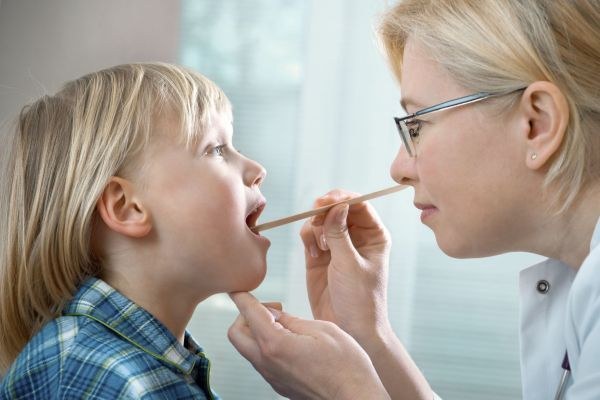Instruction
1
Adenoids seen in children of both sexes aged from 3 to 7-10 years. The reasons for their occurrence include infectious diseases (whooping cough, measles, influenza, scarlet fever, diphtheria, influenza, etc.) that cause an inflammatory response from the lymphoid tissue. Adverse factor is the poor social and living conditions: dark, damp, poorly ventilated rooms, poor nutrition. The presence of adenoids is illustrated in the following symptoms: stuffy nose, secretion of, filling the nasal passages.
2
Adenoids cause congestion in the nose and paranasal sinuses, leading to chronic inflammation of the nasal mucosa. As a result of obstructed nasal breathing the child sleeps with his mouth open, his sleep is restless, accompanied by snoring and even asthma attacks. For large growths, almost completely filling the vault of the nasopharynx, the voice adopts a tone deaf, reduced hearing. Hearing loss often becomes a cause of distraction and inattention child.
3
Due to the adenoids the child all the time open mouth, the lower jaw droops, nasolabial folds are smoothed. Mouth breathing leads to various abnormalities of bone growth of the face. The shape of the upper jaw is pressed laterally, becoming elongated. Sometimes there is a wrong position of the teeth compared to the lower upper teeth significantly protrude. All these features give the child a special expression, called "external adenoids" or "adenoid face". Consequently, the diagnosis of adenoids if the medical examination does not present great difficulties.
4
Final diagnosis the doctor puts after a posterior rhinoscopy or by palpation of the nasopharynx. For diagnosis can also applied radiography of the nasopharynx, and computed tomography. The most informative method is endoscopic rhinoscopy it possible to determine the presence and degree of adenoid vegetations, the state of the mucosa, to detect the presence of an inflammatory process in the nasopharynx.
5
After diagnosis, the doctor needs to find out the cause of the adenoids. This will need to pass tests: General blood and urine analysis, biochemical blood analysis for rheumatoid factor, antistreptolysin O, C-reactive protein, analysis of total immunoglobulin E, seeding from the pharynx, the nasopharynx on the microflora, allergic skin tests, a blood test for antibodies to worms. The results of the analyses assigned to conservative treatment, which may be replaced or supplemented by surgical treatment (adenotomy).
